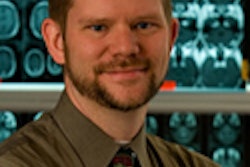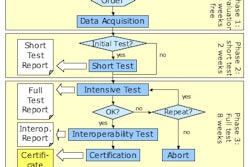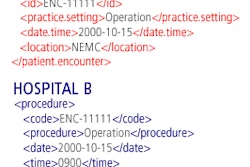In radiology, the report is king. An exquisitely designed facility, friendly and knowledgeable technologists, state-of-the-art modalities, and world-class radiologists mean little if a patient's diagnostic report does not make it back to the referring physician in a timely manner.
"Radiology reporting is a key performance indicator, as it should be, because that is our final product," said Dr. Rajeev Suri in a presentation at the 2007 European Congress of Radiology (ECR) in Vienna.
Suri, co-director of the department of vascular and interventional radiology at the University of Texas Health Science Center in San Antonio, said that radiology reporting impacts three key indicators of practice management: productivity, patient and physician satisfaction, and finances. The faster a report is completed and signed, the sooner it can be sent to the referring clinician; billing for service can be conducted more expeditiously; and throughput can be increased.
To achieve speedier report turnaround time (RTT), practices have embraced some or all of the following information technologies: RIS, speech recognition (SR), and PACS. Although studies have been conducted to measure time and productivity metrics for each of these systems, and some in conjunction with one another, Suri and his colleagues assessed the impact of each of the technologies on RTT as they were introduced in succession at their facility.
The researchers first established that RTT was transcription time, which is the time from exam to report completion, plus signature time, considered the time from transcription to radiologist sign-off. Next, they determined a baseline for RTT prior to the introduction of radiology IT systems.
"In our experience, RTT before RIS/PACS installation was 3.75 days for preliminary reports and 8.3 days for finalized reports," Suri said.
The research team collected data over a three-year period from 2003-2006 since the installation of RIS at the facility in December 2002. They examined metrics for the number of procedures, transcription time, signature time, and RTT. According to Suri, the introduction of RIS had a profound impact on report turnaround.
In the first six months after the RIS installation, transcription time decreased 53%, from 88.41 hours to 41.8 hours. Signature time also saw significant gains with a decrease of 61%, from 109.35 hours to 42.6 hours. Overall RTT decreased 57% from 197.6 hours to 84.4 hours.
Two years after the RIS implementation, the facility adopted SR technology. Further decreases in RTT were realized with the new system, Suri reported.
Transcription time decreased 37% from 51.75 hours to 32.55 hours in the first two months of SR adoption, while signature time decreased 42% from 56.95 hours to 32.55% and RTT improved by 40%, from 108.7 hours to 65.57 hours. Over the course of a year, the researchers saw a decreasing trend in report turnaround, with transcription time improving by 55%, signature time by 79%, and RTT by 67% to 35.47 hours.
PACS was brought on-board by the department in early 2005 and also had a substantial impact on reducing RTT. Transcription time improved another 66% from 25.45 hours to 8.57 hours, signature time decreased 41% from 13.5 hours to 8.02 hours, and RTT went from 38.95 hours to 16.59 hours, a decrease of 57%.
The department workload did not remain static over the three-year study period, Suri noted. Volume increased each year, from 267,000 studies in 2003 to 290,000 studies by the end of 2005, he said.
"RIS, speech recognition, and PACS have significantly decreased report turnaround times, from 197.6 hours to 16.59 hours, at our academic center," Suri concluded.
By Jonathan S. Batchelor
AuntMinnie.com staff writer
April 17, 2007
Related Reading
RIS/PACS provides potential for performance, safety improvements, March 21, 2007
Emergency radiology requires fast turnaround times with PACS, December 11, 2006
Speech recognition technology shows double-digit error rate, November 30, 2006
HIT needs, cost factors drive speech recognition implementation, September 27, 2006
Workflow, communication tools offer new hope for productivity, August 1, 2006
Copyright © 2007 AuntMinnie.com



















